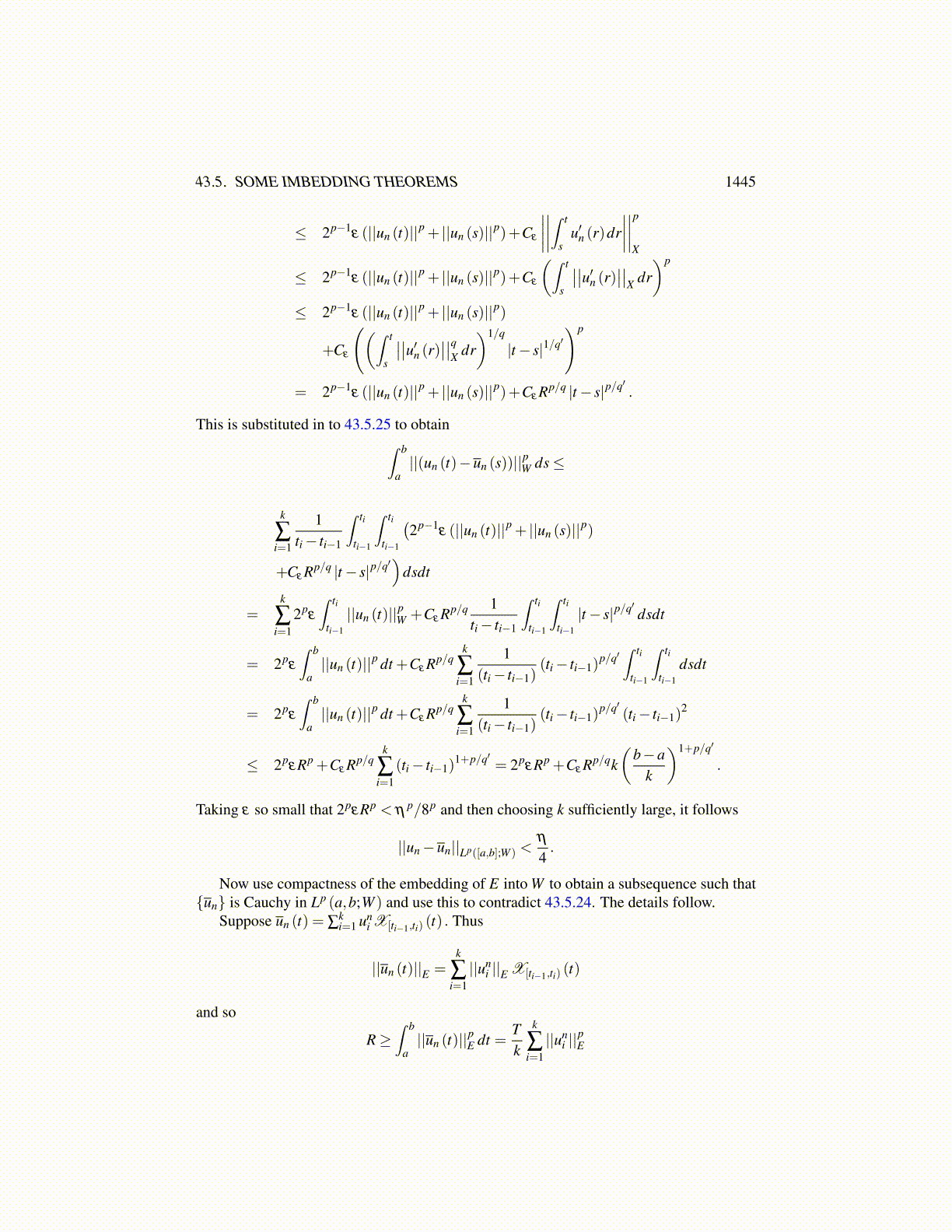
43.5. SOME IMBEDDING THEOREMS 1445
Now let s ̸= t. Then
||un (s)−um (s)|| ≤ ||un (s)−un (t)||+ ||un (t)−um (t)||+ ||um (t)−um (s)||
From 43.5.22
||un (s)−um (s)|| ≤ 2(
ε
3+Cε R |t− s|1/q
)+ ||un (t)−um (t)||
and so it follows that if δ is sufficiently small and s ∈ B(t,δ ) , then when n,m > Nt
||un (s)−um (s)||< ε.
Since [a,b] is compact, there are finitely many of these balls, {B(ti,δ )}pi=1 , such that for
s ∈ B(ti,δ ) and n,m > Nti , the above inequality holds. Let N > max{
Nt1 , · · · ,Ntp
}. Then
if m,n > N and s ∈ [a,b] is arbitrary, it follows the above inequality must hold. Therefore,this has shown the following claim.
Claim: Let ε > 0 be given. There exists N such that if m,n>N, then ||un−um||∞,W < ε.Now let u(t) = limk→∞ uk (t) .
||u(t)−u(s)||W ≤ ||u(t)−un (t)||W + ||un (t)−un (s)||W + ||un (s)−u(s)||W (43.5.23)
Let N be in the above claim and fix n > N. Then
||u(t)−un (t)||W = limm→∞||um (t)−un (t)||W ≤ ε
and similarly, ||un (s)−u(s)||W ≤ ε. Then if |t− s| is small enough, 43.5.22 shows themiddle term in 43.5.23 is also smaller than ε. Therefore, if |t− s| is small enough,
||u(t)−u(s)||W < 3ε.
Thus u is continuous. Finally, let N be as in the above claim. Then letting m,n > N,it follows that for all t ∈ [a,b] , ||um (t)−un (t)|| < ε.Therefore, letting m→ ∞, it followsthat for all t ∈ [a,b] , ||u(t)−un (t)|| ≤ ε.and so ||u−un||∞,W ≤ ε. Since ε is arbitrary, thisproves the theorem.
The next theorem is another such imbedding theorem found in [91]. It is often used inpartial differential equations.
Theorem 43.5.5 Let E ⊆W ⊆ X where the injection map is continuous from W to X andcompact from E to W. Let p≥ 1, let q > 1, and define
S≡ {u ∈ Lp ([a,b] ;E) : u′ ∈ Lq ([a,b] ;X)
and ||u||Lp([a,b];E)+∣∣∣∣u′∣∣∣∣Lq([a,b];X)
≤ R}.
Then S is precompact in Lp ([a,b] ;W ). This means that if {un}∞
n=1⊆ S, it has a subsequence{unk
}which converges in Lp ([a,b] ;W ) .